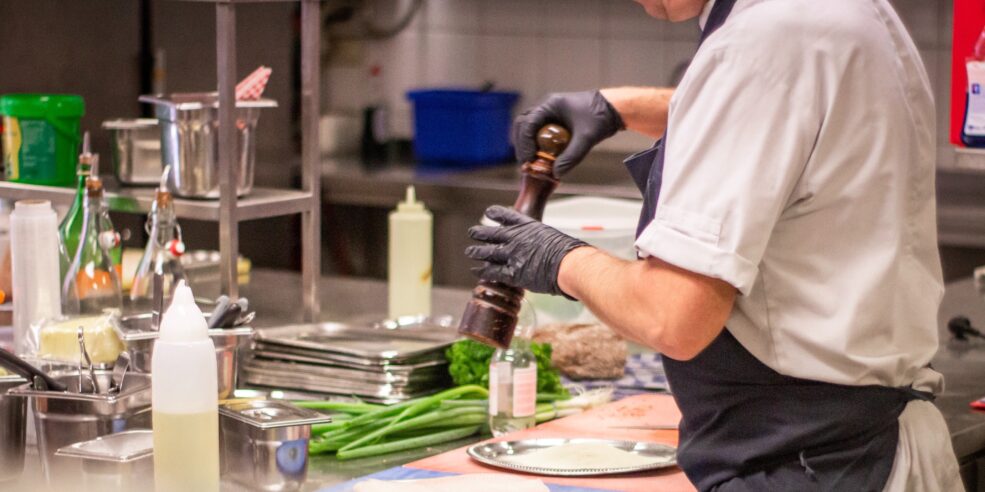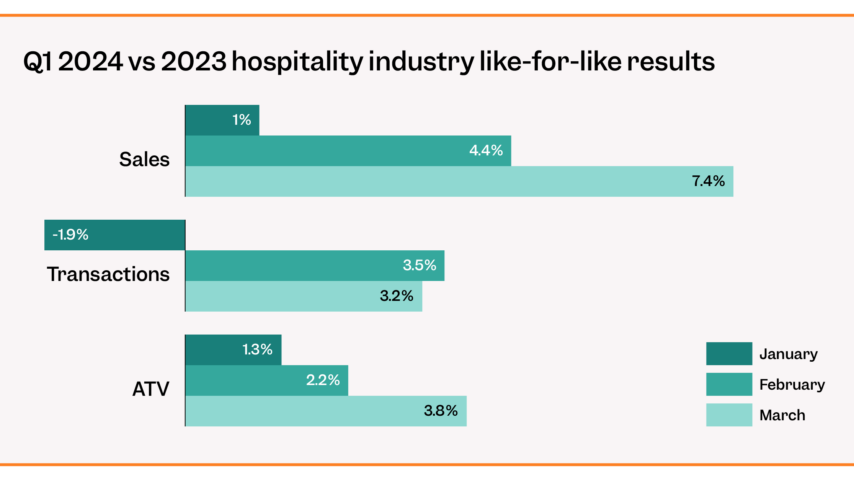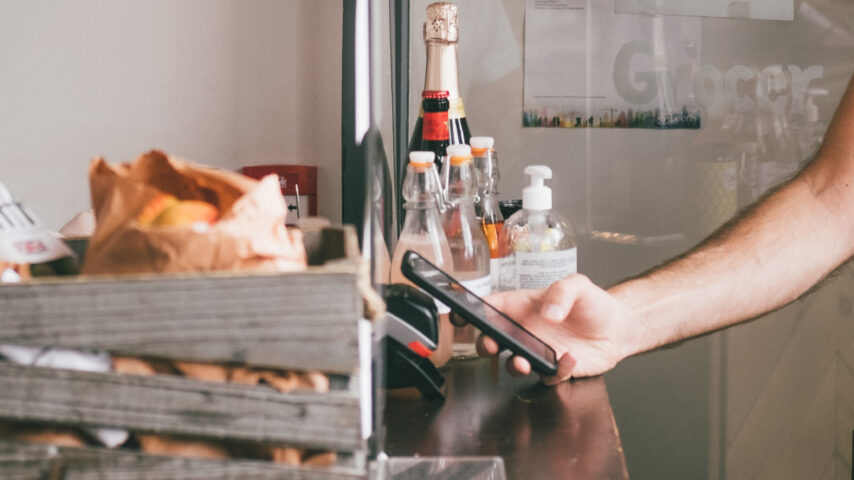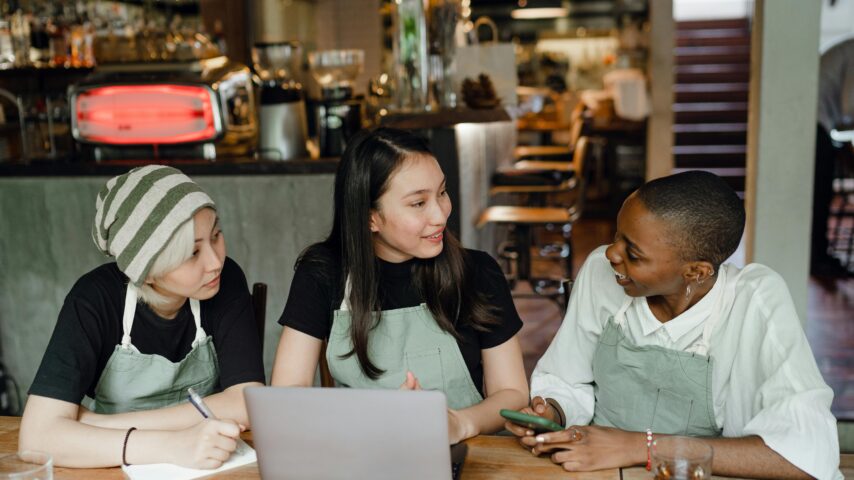In this second part of our dark kitchen series, we’re breaking down what the top operators are doing and how to really capitalise on this constantly-growing delivery trend. From online ordering to the virtual landscape and funnelling all your sales to the right place, we cover it all on dark kitchens.
It’s clear that things are not going back to normal any time soon. While some states in the US have reopened for business and Britain looks to opening hospitality businesses in just over a month, eat-in traffic will not look the same as it did last year for a long time yet. The main thing to consider at the moment is that people are still scared and that will be reflected in their consumer habits. In fact, according to The Boston Consulting Group, 60% of Britons and 49% of Americans are planning to spend somewhat or a lot less than usual on eating out in the next 6 months. And analysts at McKinsey predict that it will take at least a year, if not three, for diners to return in the same numbers as pre-Covid-19.
Although these figures can seem incredibly daunting for restaurateurs, there is hope yet. That same BCG study shows that 78% of Americans and 63% of Brits plan to spend the same if not more on delivery than they did before the virus hit. The logical conclusion for any restaurateur is therefore to bet heavily on delivery and, in the same vein, on dark kitchens.
The fact is, any restaurant can set up a dark kitchen (or ghost kitchen, or cloud kitchen or virtual kitchen or whatever the term ‘du jour’ is) and dark kitchens that are already operating can always improve or expand what they’re doing. To help with that, we’ve broken down what we’ve seen the most successful operators doing recently to bring you the most up-to-date advice on delivery platforms, virtual brands and the tech behind it all.
Delivery on your terms
Nowadays, the term ‘dark kitchen’ is pretty much synonymous with delivery platforms such as Deliveroo, UberEats or Just Eat. These companies have long wanted to associate themselves with the trend, jumping onto the dark kitchen bandwagon several years ago and allowing brands to lease the space as a way of reaching their customer base. But these platforms can be expensive. For the unaffiliated dark kitchen, commission can be up to 30% and for brands using sites such as Deliveroo Editions (Deliveroo’s own cloud kitchens), fees go up to 40%.
Unfortunately, what these delivery platforms sell is ease and visibility. Customers know they can go onto any of their apps and find something for dinner, and, if you’re not listed there, you’re missing out on sales. However, that doesn’t mean that they have to be your only source of delivery revenue.
More and more companies are popping up to help get your food to your customers without the need for a middleman. Slerp, Flipdish, and Loke will all help you set up ordering from your website or your own dedicated app; orders are sent to your POS through integrations and you keep your customers’ data, allowing you to target them in the best ways possible. You also have the choice of using your own delivery drivers or using one of their trusted couriers, e.g. Stuart, meaning you get much more control over how your food arrives.
Platforms like these are also vastly less expensive: commission is around the 5-10% mark as opposed to the massive 30% of the big delivery apps. This method also allows you to capitalise on your existing loyal following and customer base by giving them the best deals and promos and encouraging them to keep coming back for more.
But what happens if your food doesn’t travel well? At this point, even the finest of dining establishments are looking at getting into the delivery game and that’s where companies like Supper come in. On the opposite end of the spectrum to the do-it-yourself approach, Supper provides the platform and the drivers for all your delivery needs. They also use their own staff of fully-trained drivers and specially designed bikes that have a heating/cooling compartment at the back that can be adjusted to your food’s ideal temperature to make sure everything arrives perfectly every time.
Virtual is here to stay
As we’ve mentioned before, a serious pro of operating a ghost kitchen is the ability to run multiple brands at the same time and from the same place. In our last article, we covered how diversifying your offering means appealing to the same customers twice, three times, or even four times more often. But beyond appealing to that same customer, being able to list multiple brands on delivery apps gives your business more exposure.
Delivery platforms try to give as many cuisine options to their users as possible. This means that in the top results, you might find one chicken restaurant, one pizzeria, one burger joint and so on. By offering different brands serving different cuisines you increase your likelihood of being listed in the top results.
Virtual brands can also help you save on costs. Delivery platforms like Deliveroo or UberEats often lower their commission to 20% if you agree to exclusivity. Therefore, you could potentially have two separate pizza brands, one for each platform, operating with very similar menus out of the same kitchen and still remain exclusive. And remember, there is no limit to the amount of brands you create, unlike in the traditional restaurant setting, if something isn’t working after a week or two, you have the freedom to try something new. This is the beauty of brands that solely exist in virtual reality.
Aggregate before you operate
So you’ve set up all these brands on all these platforms, but how do you keep up with all of your sales? For one-brand locations looking to get into delivery, the answer used to be to find a POS that had an integration with the big delivery platforms. But nowadays, with so many platforms available and multiple brands in play, to keep things simple and streamlined, your best bet is to use a delivery sales aggregator. There are several available such as Deliverect, Aigens or ItsaCheckmate. What they essentially do is act as a funnel, sending sales straight through to your POS and kitchen printer meaning that you don’t have to worry about keeping track of several different tablets and manually inputting sales into your till.
With all of this in place, you’ll need a way to track how each brand is doing as well as your business in its entirety. While each brand may act as its own entity, the reality is that for back of house operations, you need to think of them all as a whole. This applies especially to inventory orders and staff scheduling. Therefore, using an analytics tool like Tenzo allows you to see all the sales from each of your brands in one place set against total cost of labour and total cost of inventory. You can then see exactly where your costs are coming from and gives you the ability to adjust accordingly before any big errors happen. And with Covid making margins tighter than ever, making sure every cost is justified will be more important than ever.
We’ll keep updating our advice for successfully navigating these uncertain times, but with the likelihood of going back to the pre-Covid normal pretty much unimaginable for the next year, and with demand for delivery continuously rising, dark kitchens are clearly the best way to go.
As usual, if you’d like help setting up a dark kitchen, virtual brands or any advice on what you can do at the moment in preparation for reopening, please feel free to email us at [email protected] .





